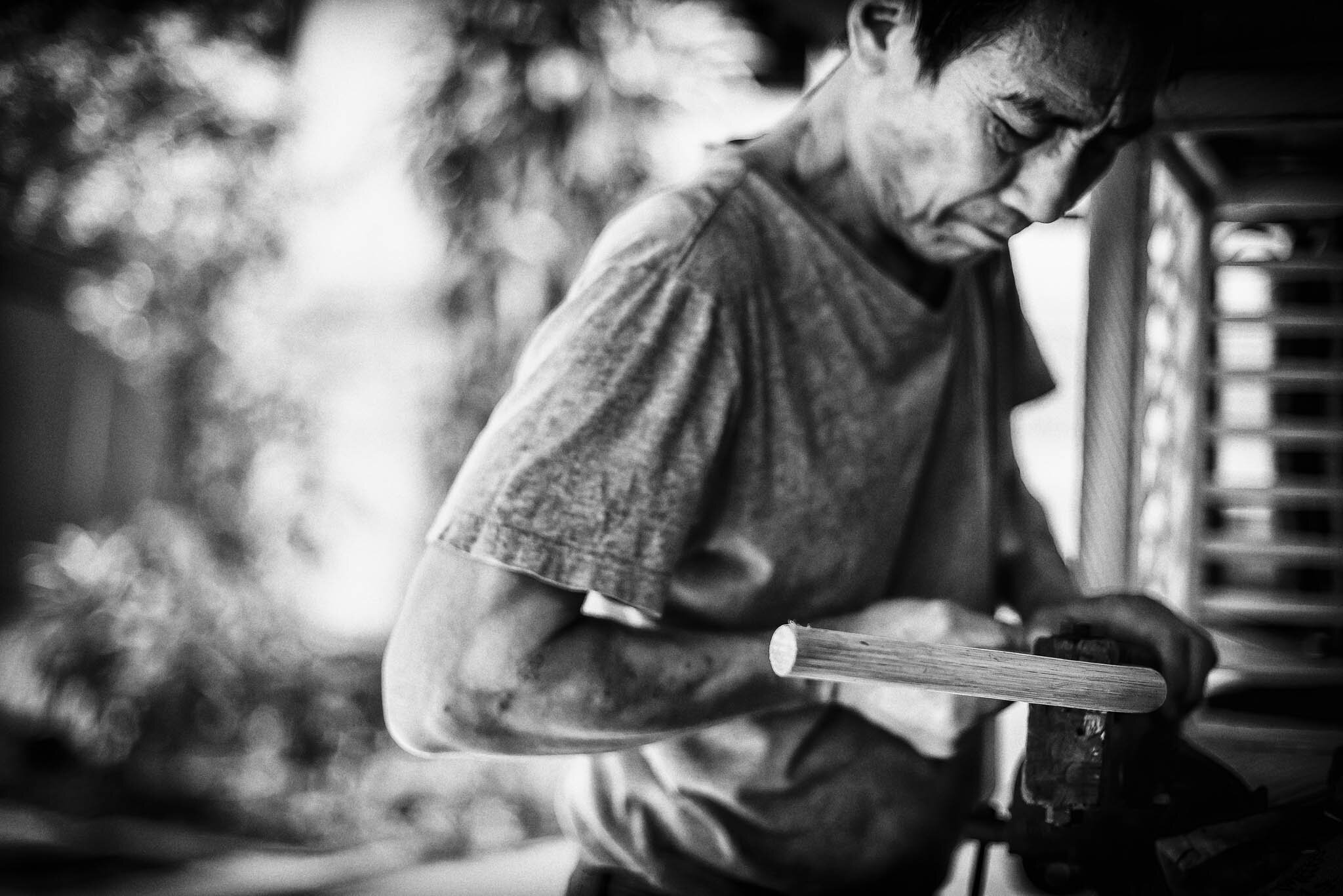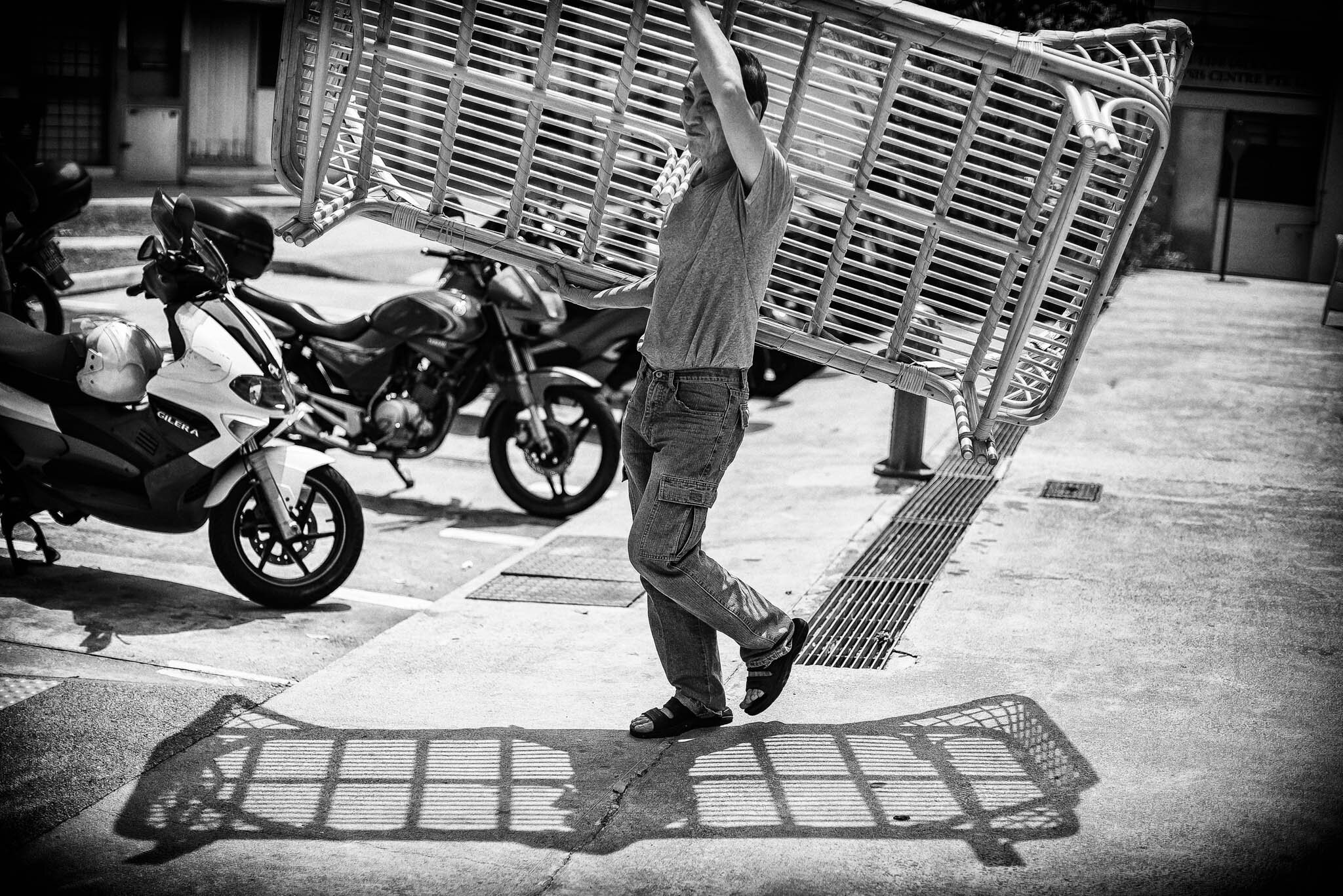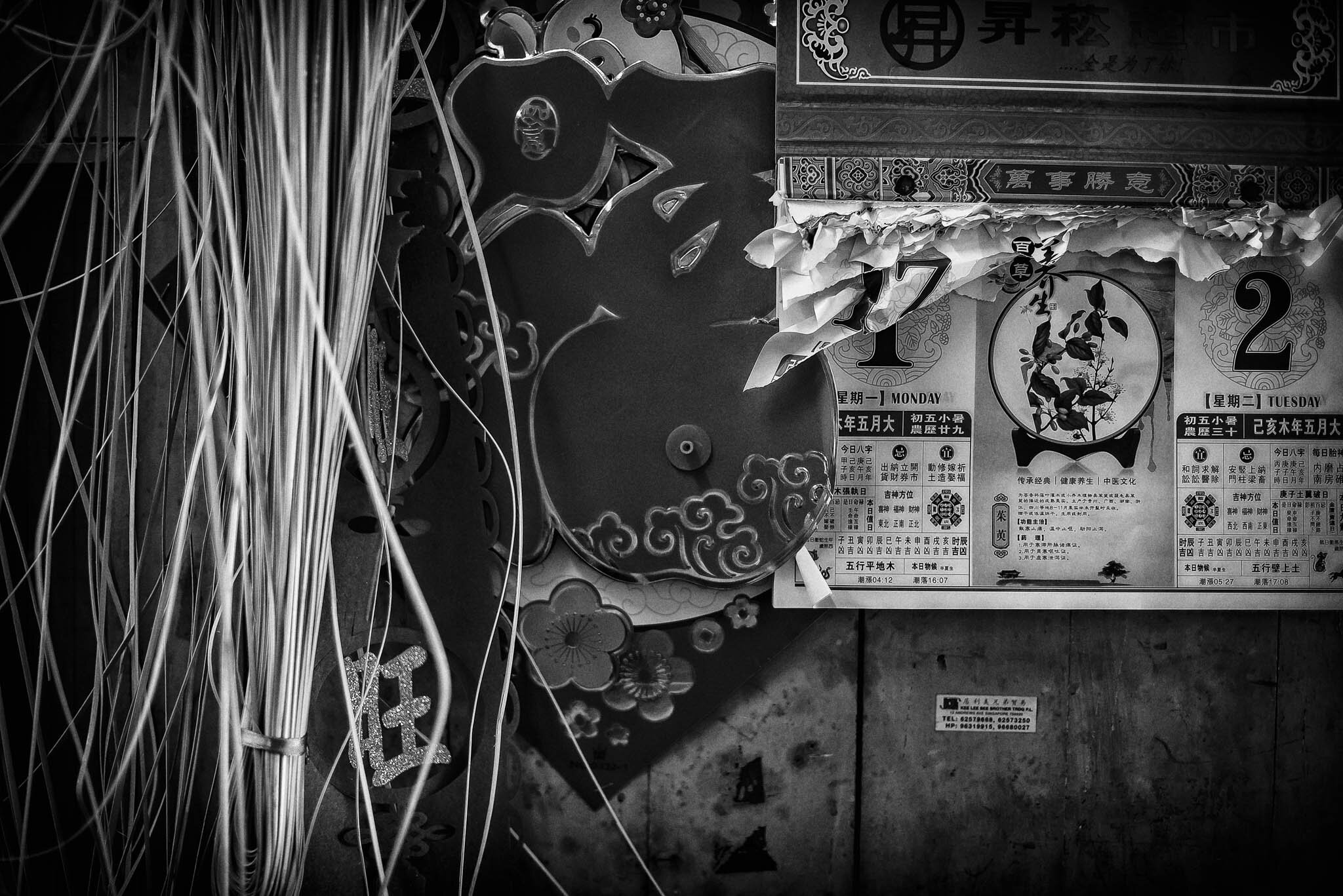At his unassuming shophouse in Bukit Merah, Mr Chen would make use of every conceivable corner to stack his wares - from armchair to laundry basket.
A few rocking chairs even seem to defy gravity, hanging on the walls like installation art in an upside-down museum.
Enter Chun Mee Lee Rattan Furniture shop - a labour of love by rattan artisan Mr Chen Foon Kee, 70.
When one inspects the array of designs shaped by Mr Chen’s hands, it is mind-boggling to hear that he does this without measurement. Everything is crafted by experience.
“Rattan craft is like painting. Your painting is a projection of what you see in your mind. It is the same with crafting rattan.”
Mr Chen starts each piece by bending the thicker rattan into basic frames, and then start adding details with finer rattan. The steps of crafting each piece of furniture - a chair, a basket, even a bed - are like hieroglyphs in his mind, to be deciphered only by the master himself.
Recounting his childhood days in a tiny rental flat, Mr Chen recalls being surrounded by rattan in his father’s home-cum-workshop. At 12 years old, his first project - a simple children’s chair - took him a week to complete. “My sister only took 2 days!” Mr Chen confessed.
At 19, he started working at his father’s Anson Road rattan shop in 1969. A year later, the elder Chen passed away, and his only son was suddenly at the helm of the family business. It was a difficult time - the younger Chen had to juggle night school and his job - which involved largely taking orders from ship crew calling at Tanjong Pagar Port.
“During my student days, I would skip school just to take orders. The teachers were very understanding. They would say, Chen Foon Kee is absent, the ships must have docked”
The enterprising young boss would obtain a list from the port clerks and watch the exact times of the ships’ arrival. He would stay up till the wee hours, sometimes even 1am, so that he can board the ship at the first opportunity to sell his wares.
“Sailors are very generous clients. They don’t bargain. I would bring photos, they would place orders, pay up and pick up the goods the next time they dock.”
Because some docks had no access to cranes, he would carry the furniture up to gangplank by himself, sometimes 2 armchairs at one go. The work was tough, and Mr Chen found himself working through public holidays. The duty bound rattan heir would continue to ply his father’s trade for 50 years.
“If I weren’t a rattan craftsman, I might have been a sailor,” said Mr Chen wistfully.
“Back then, a sailor can earn three to four times the salary of a teacher or police officer, and get to see the world!”
In the 90s, the shop relocated from Anson to Bukit Merah. Sailors no longer ordered the furniture, and exports to Europe and Australia, once a profitable part of the business, thinned out. Today, demand for rattan furniture is limited to niche clientele who appreciate the lightweight, durable and timeless pieces.
The shop’s name Chun Mee Lee loosely translates into “Really Beautiful and Bountiful”, was chosen by Mr Chen’s father, a native of China’s Meizhou.
Instead, many of his clients would entrust Mr Chen with heirloom and antique furniture, usually broken beyond repair but still brimming with sentimental value, in the hope of restoring them to their former glory. True to the name that his father had given the shop - Chun Mee Lee - which loosely translates into “Really Beautiful and Bountiful”, Mr Chen continues to soldier on as one of the last rattan craftsman in Singapore. And nothing seems to faze the feisty septuagenarian.
“If someone can make this, I can surely repair it.”
Chun Mee Lee Rattan Furniture is located at 122 Bukit Merah Lane 1 and is open daily from 10am-9pm except on Sundays, 1-6pm.













